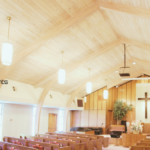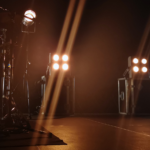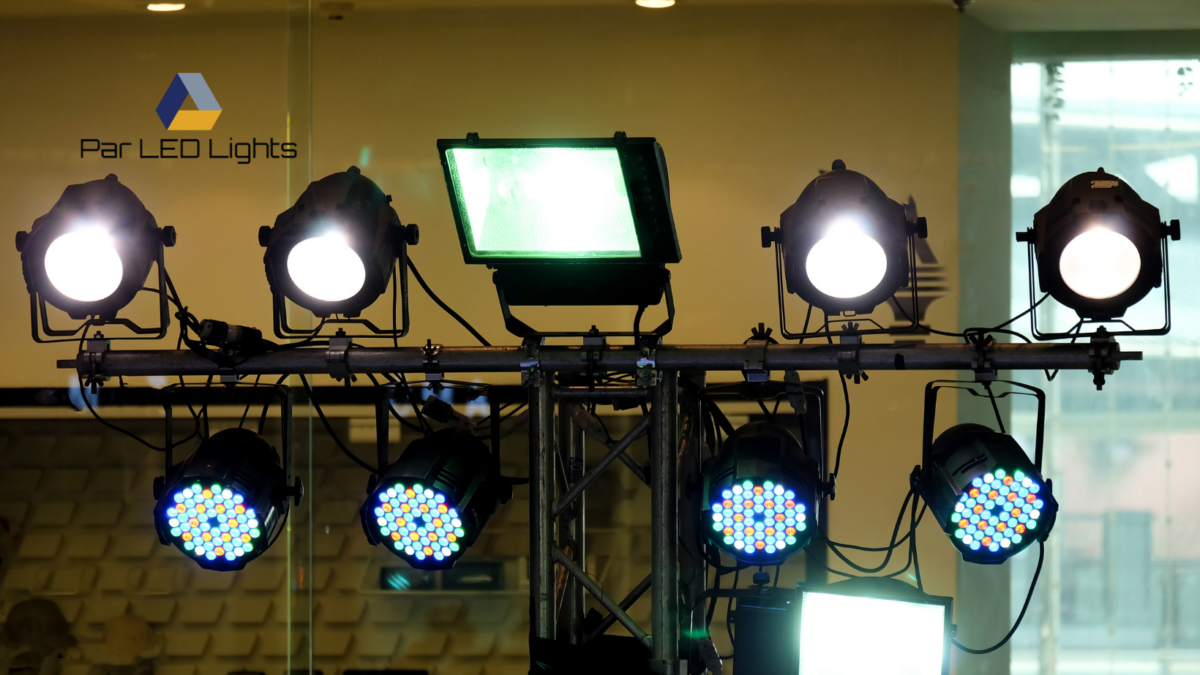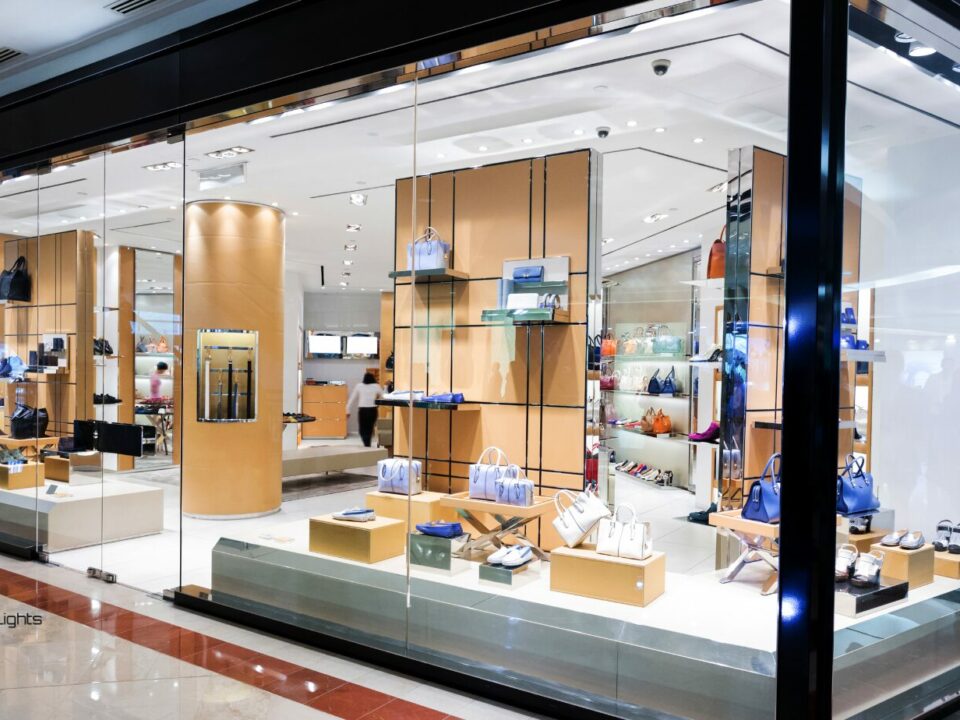
High Ceiling Lighting Solutions for Houses of Worship
May 5, 2024
Solutions for 40W, 60W, and 100W Lamps
June 12, 2024Choosing the Right Type for Your Lighting Needs
PAR lights are integral components in many lighting applications, ranging from stage performances and architectural accents to residential and commercial settings. Their ability to produce focused beams of light makes them ideal for precisely highlighting specific areas or objects.
However, with the diverse range of PAR lights available, each varying in size, wattage, and beam angle, selecting the right type is paramount to achieving optimal lighting outcomes tailored to specific needs.
Within the PAR light category, variations include PAR, BR (Bulged Reflector), and MR (Multi-Faceted Reflector) lights, each distinguished by unique characteristics. Particularly, the PAR56 and PAR64 variants stand out for their widespread usage and notable features. These include differences in beam angles and spreads, with PAR56 typically offering narrower beams suitable for focused lighting, while PAR64 provides broader coverage ideal for general illumination.
Applications specific to PAR56 and PAR64 lights span from theatrical performances and architectural accents to outdoor events and residential lighting, where their distinct beam characteristics cater to diverse lighting requirements with precision and efficiency.
PAR vs. BR vs. MR Lights
PAR lights are like spotlights, focusing their light on specific areas with precision. On the other hand, BR lights spread their light more evenly, making them great for lighting up bigger spaces like rooms. MR lights are a mix of both, giving you a balance between focused light and coverage, so they’re handy for various lighting needs.
Learn more about each particular type of light lighting:
Beam Angle and Spread
- PAR lights typically offer a focused beam with a narrower angle, ranging from 5 to 45 degrees, allowing for precise illumination of targeted areas.
- BR lights, on the other hand, provide a wider beam angle, often exceeding 100 degrees, ensuring broader coverage suitable for general lighting applications.
- MR lights fall between PAR and BR lights in terms of beam angle, offering a moderate spread that balances focus and coverage.
Directionality
- PAR lights exhibit strong directionality, making them ideal for spotlighting and accentuating specific objects or features with high intensity.
- BR lights provide omnidirectional illumination, evenly dispersing light in all directions, making them suitable for ambient or general lighting.
- MR lights offer directional lighting similar to PAR lights but with a slightly wider beam spread, providing versatility in various lighting scenarios.
Advantages and Disadvantages
- PAR lights: Ideal for accent lighting due to precise beam control and high intensity, but limited beam spread and may require multiple fixtures for broader coverage.
- BR lights: Their wide beam angle provides even illumination over wider areas, yet they lack directional control for spotlighting.
- MR lights: Strike a balance between spotlighting and general lighting, offering versatility, but may not match the intensity of PAR lights and have moderate directionality.
Factors to Consider When Choosing PAR Lights
When selecting PAR lights, several crucial factors come into play. Firstly, the beam angle and beam spread play a pivotal role in determining how light is distributed and the coverage area achieved.
A narrower beam angle, characteristic of PAR lights, offers focused illumination that is ideal for tasks such as stage performances and accentuating architectural features. Intensity and directionality are equally significant, ensuring that the lighting meets specific requirements with precision. Additionally, considering the energy efficiency of PAR lights, comparing the consumption of PAR56 and PAR64 variants is essential for making informed decisions, balancing performance with sustainability.
Cost considerations also come into play, weighing the initial investment against long-term savings, particularly in energy expenses. Furthermore, compatibility with existing lighting fixtures is crucial, necessitating thorough evaluations before retrofitting with PAR56 or PAR64 lights to ensure seamless integration and optimal performance.
PAR56 and PAR64 Lights
PAR56 and PAR64 are popular types of lights often utilized for various lighting applications due to their distinct sizes and capabilities. The PAR56 lights typically have a diameter of 7 inches, whereas the PAR64 lights are slightly larger with a diameter of 8 inches. These lights are commonly used in stage lighting, architectural illumination, and outdoor accent lighting due to their design and versatility.
Here are some key differences and typical uses:
Differences between PAR56 and PAR64 lights:
- Wattage: PAR64 lights generally have higher wattage ratings compared to PAR56 lights, offering greater brightness for more demanding applications.
- Beam Angle: PAR56 lights typically feature narrower beam angles, providing focused illumination ideal for spotlighting, whereas PAR64 lights offer wider beam angles for broader coverage.
- Compatibility: Due to variations in dimensions and fixtures, PAR56 and PAR64 lights may have different mounting requirements and may not be interchangeable.
Examples of lighting scenarios:
- Stage Lighting: Both PAR56 and PAR64 lights are commonly used in theatrical productions, concerts, and live events to highlight performers and create dynamic lighting effects.
- Architectural Illumination: PAR64 lights are preferred for highlighting larger architectural features such as buildings and monuments due to their broader beam angles. In contrast, PAR56 lights are more suitable for focused accent lighting on smaller structures.
- Outdoor Accent Lighting: These lights are employed to enhance the visual appeal of outdoor spaces, landscapes, and sculptures, creating ambiance during nighttime events or gatherings.
Ready To Retrofit?
In wrapping up, it’s evident that selecting the appropriate PAR light, whether PAR56 or PAR64, is pivotal for achieving desired lighting results across various applications.
From stage productions to architectural highlights and outdoor ambiance, the choice between PAR56 and PAR64 lights significantly shapes lighting efficacy and aesthetics. Moreover, retrofitting existing lighting systems with suitable PAR lights emerges as a notably easier and cost-effective option compared to purchasing entirely new fixtures.
What are you waiting for? Buy now!








